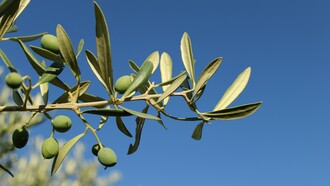Uzbekistan, a country in Central Asia, is home to one of the most fertile agricultural lands with a potential of being an agricultural goldmine for global investors. According to the Food and Agriculture Organization of the United Nations, Uzbekistan ranks second in the world in terms of carrot and apricot production. Furthermore, the country ranks in the top 15 in terms of producing various agricultural goods, including apples, cucumbers, grapes, onions, plums, tomatoes, and watermelons.
Apart from high agricultural production, what makes Uzbekistan stand out among other countries is the country’s climate and soil advantages. Uzbekistan is home to nutrient-rich soils, especially in the river valleys and oases. It provides essential minerals that enhance the taste and quality of fruits. Uzbekistan enjoys abundant sunshine, with more than 300 sunny days per year. Moreover, the climate in the country is dry, which increases the concentration of sugars in fruits, enhancing their sweetness and flavor. A great example of this would be Uzbek melons that are harvested in the Mirzachul desert. Foreign tourists are often impressed by the sweetness of those melons. During his visit to Uzbekistan in 1996, King Charles III of the UK enjoyed trying Uzbek melon.
Harvest timing is also crucial in agriculture. Uzbekistan has a 4-season climate, which allows trees and plants to "rest" during the winter, preparing for spring. As a result, fruit trees produce a bountiful harvest without requiring any chemicals.
Although Uzbekistan has great agricultural potential, the country is often underrated or less known among foreign investors, creating a lot of untapped opportunities. According to the International Trade Administration, agriculture contributes to a quarter of Uzbekistan’s GDP, employing around 26% of the country’s labor force. More than half of the country’s area is considered agricultural land. Considering the cheap labor availability in Uzbekistan and the country’s agricultural potential, these numbers could increase, decreasing the unemployment rate in the country.
A big advantage for investors other than the affordable labor force and agricultural potential is Uzbekistan’s geographical location. The country is located at the crossroads of Europe and Asia. It gives a logistical edge in agricultural exports. Furthermore, there are a lot of reforms being implemented to create an investment-friendly environment in Uzbekistan. For instance, Uzbekistan offers a three-year multiple-entry visa with unlimited renewals for foreign investors, and the required foreign investment in companies was reduced from 30% to 15%. Moreover, the VAT rate was reduced to 12%, and dividends from foreign investors' shares are tax-free for three years. Apart from offering tax benefits, the country also took the responsibility of offering investors financial incentives and legal rights while developing market infrastructure. Additionally, over 7000 types of raw materials and products required by investors are exempt from customs duties.
It is also important to note that Uzbekistan achieved positive results in sustainability and environmental efforts, focusing on green development and environmental security to safeguard its agricultural potential and ensure long-term growth. Central to this effort is the transition to renewable energy and water-saving technologies, as outlined in key policy documents such as "The Strategy for the Transition to a Green Economy for 2019–2030." By 2030, Uzbekistan aims to generate 30% of its electricity from renewable sources, significantly reducing its carbon footprint. Complementing this, innovative water management practices have been implemented across 25% of the country's irrigated land, including drip irrigation and laser leveling, which saved 3 billion cubic meters of water in 2022 alone. Another big initiative in the country is “Yashil Makon.” Launched in 2021, this project aims to plant a billion trees in Uzbekistan by 2026, reducing the greenhouse effect.
It is crucial to mention that agriculture is deeply attached to Uzbek culture and history. For many centuries, farmers in this region have been producing sweet fruits and vegetables. The book Golden Peaches of Samarkand by Edward H. Schafer is a great example of that. The book explores exotic goods imported into China during the T'ang dynasty and their influence on Chinese culture. In the book, one can read about the mysterious golden peaches sent by the king of Samarkand to the Chinese court. Samarkand is one of many historical cities in Uzbekistan, with a history of over 2750 years. This example demonstrates that this region was producing and exporting unparalleled agricultural goods even many centuries ago. Furthermore, different agricultural fests and “Qovun sayli” (melon festival) are organized across the country every year.
In an era when sustainable agriculture and food security dominate the global agenda, Uzbekistan’s agricultural sector offers a compelling model of resilience and innovation. The nation’s ability to leverage its climate, strategic location, and government support positions it as a rising leader in global agriculture. By taking advantage of Uzbekistan’s untapped agricultural potential, investors not only make profits but also contribute to lower unemployment rates and address food security issues, providing people with high-quality agricultural products.















